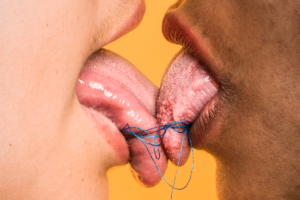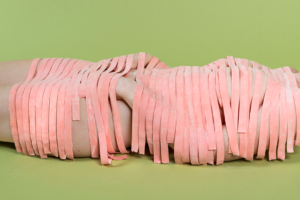Your cart is currently empty!
Interview with Joanne Leah

Joanne Leah is a Brooklyn-based artist. In 2016 she founded Artists Against Censorship, a platform that catalogs artists‘ experiences with social media censorship. She currently serves as a liaison between censored artists and policymakers at Facebook and Instagram to re-examine what is considered explicit content.

JB: Social media has become almost inextricable from the way that we share and consume art. How do you think platforms like Instagram and Facebook have changed the work that artists are making?
JL: Instagram has become so necessary for artist visibility. However, we are now dealing with a new audience: algorithms. Artists are tasked with creating work that stands out amongst an infinite scroll of imagery. Social media’s ubiquitous format and censorship guidelines have had a major influence on the composition, concept, and colors I use in my own work. I like to see what I can get away with.

In your artist’s statement, you write: “by freeing ourselves from the constraints of physicality, we vividly bend and lurch into new structures… the images themselves become proof of this vulnerable act, between skin and viscera, exhibitionist and voyeur, public and private.” Your work, while technically incorporating nudity, evokes a sense of transcendence beyond the physical form. How can censorship policies pertain to art, which is nuanced by nature?
The current [social media] policies consistently censor art that it supposedly allows, such as “photographs of paintings, sculptures and other art that depicts nude figures.” On the other hand, the policies seem unable to take context into account regarding fine-art photography that includes nudity. The policies clearly state, “we understand that nudity can be shared for a variety of reasons, including as a form of protest, to raise awareness about a cause, or for educational or medical reasons.” But for some reason they can’t decide where fine-art photography falls.

Instagram’s guidelines disproportionately censor womxn’s bodies. Why are womxn’s bodies considered to be inherently sexually explicit when posted by an artist or by a womxn on their own accord, while brands and major corporations are not held to the same standards?
Advertising decides what is desirable in our culture, and corporations seem to get a free pass when it comes to censorship. The platform is at the whim of the advertisers, because this is how they make their money. Instagram’s policies are written in strictly binary language when it pertains to gender, which is extremely problematic.

This past October you helped organize a summit meeting between artists, arts institutions and policymakers at Instagram’s headquarters to discuss issues of nudity and media censorship. What were some of the major takeaways from the meeting?
Policymakers seem to want input from the art world to improve their accuracy when it comes to censoring art, but they still don’t have any answers in regards to fine-art photography vs. pornography. After the meeting, Facebook and Instagram released updated Community Guidelines that censor the use of suggestive language that mentions sexual activity. This seems to be a step in the wrong direction.